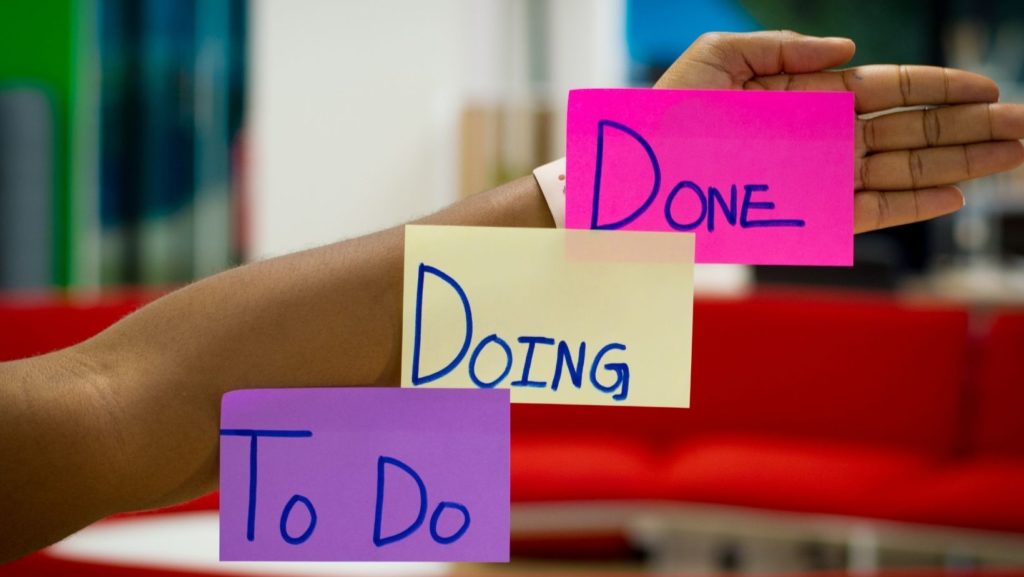It’s 4:00 p.m. and you’re slogging through the remainder of the workday, re-reading the latest email from your boss to make sure you’re not missing anything vital. Your morning coffee buzz has completely waned and instead of focusing on work, you’re thinking about the groceries you need to pick up for dinner. Why does this sound so familiar?
One’s ability to concentrate, as well as the length of their attention span can vary for many reasons. Some people just have a harder time tuning out distractions. Age and lack of sleep can affect concentration.
A few years ago, a study from Microsoft revealed that people now generally lose concentration after eight seconds (the average attention span of a goldfish is nine seconds), underscoring the effects of an increasingly digitized lifestyle on the brain.
The smart technology age has ushered along with it an array of distractions unimaginable barely 20 years ago. Social media alerts, push messages from newspapers nudging you midday to read a week-old think piece, and the latest GIF on your team’s Slack channel all compete for your attention. Kids are similarly drawn into their devices, lured by funny memes, YouTube channels, and TikTok videos that are designed to capture their attention in short, easily digestible bursts of content.
Most people forget things more readily as they age, and decreased concentration can accompany memory loss. Head or brain injuries, as well as certain neurodiverse conditions, such as ADHD, can also affect concentration.
The good news is that there are simple ways to teach your body to combat distraction and shield your mind from wandering thoughts. Research suggests that brain training activities can have a big impact on concentration, help you develop your working and short-term memory, as well as your processing and problem-solving skills.
Here are five brain training activities that you might want to start weaving into your day to get your mind into top shape:
1. At-Home Neurofeedback

Neurofeedback tools such as Narbis smart glasses help you keep a sharp mind, as well as achieve peak performance and flow. In fact, the experiments that NASA conducted on pilots on which our science is based showed the positive link between neurofeedback and mental acuity.
Used at home, or work, the glasses gently change tint when they detect you grow distracted, reminding you when it’s time to refocus on the task at hand. Once your brain is focused, the lenses clear.
While reading or working on a computer, or doing homework, Narbis provides instant feedback to recognize when you are distracted, giving you the cue to get back on task. The smart glasses help identify these behaviors which encourages you to shift into a relaxed and attentive state.
Learning how it feels to pay attention and how to maintain that focus can have lasting effects for a strong mind throughout one’s lifetime.
Worn two to three times a week for 30 minutes a session, neurofeedback training paves a way to productivity, and maintains a nimble brain for decades to come.
2. Meditation

Like neurofeedback, meditation has been linked to the brain’s ability to maintain calm focus and there’s good news for those of us who haven’t trained in systematic meditation for years. A study on short-term meditation training showed that students who meditated for just 20 minutes a day for five days showed significantly better attention and control of stress than a control group.
The training method stemmed from traditional Chinese medicine and incorporated aspects of other meditation and mindfulness training.
Compared with the control group, the experimental group of 40 undergraduate Chinese students given 5 days of 20-min integrative training showed greater improvement in conflict scores on the Attention Network Test, lower anxiety, depression, anger, and fatigue, and higher vigor on the Profile of Mood States scale, a significant decrease in stress-related cortisol, and an increase in immunoreactivity.
Another 2011 study from scientists at Yale found that people who meditated regularly were less likely to engage in “mind-wandering” and were generally happier. The researchers of the study suggest that this was because long-term meditators exhibited a lower amount of what’s called default mode network activity (DMN) — a function of the brain linked with attention issues, anxiety, and depression.
3. Show your negative emotions to the door

The most primitive part of our brain – often called our lizard brain – isn’t particularly nuanced. It’s where we hear about our fight or flight instincts. Stress, and other negative emotions are processed bluntly as threats. When the amygdala is activated by negative emotions, it interferes with the brain’s ability to solve problems or do other cognitive work. Positive emotions and thoughts do the opposite — they improve the brain’s executive function, and so help open the door to creative and strategic thinking, write Paul Hammerness, MD, and Margaret Moore in Harvard Business Review.
“You can tame negative emotional frenzy by exercising, meditating, and sleeping well. It also helps to notice your negative emotional patterns. Perhaps a coworker often annoys you with some minor habit or quirk, which triggers a downward spiral. Appreciate that such automatic responses may be overdone, take a few breaths, and let go of the irritation,” say Hammerness and Moore.
Other tips for slaying negativity: situate yourself around more positive people, have a cup of tea, write down your negative thoughts on a piece of paper and throw it away, or think on something that requires concentration, like the order of books on your bookshelf for 30 seconds.
4. Stop wayward thoughts in their tracks

Your brain continuously scans your internal and external environment, even when you are focused on a particular task. Distractions are always lurking: wayward thoughts, emotions, sounds, or interruptions, write Hammerness and Moore. Fortunately, the brain is designed to instantly stop a random thought, an unnecessary action, and even an instinctive emotion from derailing you and getting you off track.
What can you do? To prevent distractions from hijacking your focus, use the ABC method as your brain’s brake pedal.
The first step is being aware of your options. You can either follow the distraction and become unfocused, or you can keep going with the task that you are working on.
The second step is breathing deeply. Take a minute to relax without thinking about the distraction.
The third step is making a choice. You can choose to be distracted or you can choose to stay focused.
5. Walk around between tasks

When you need to turn your attention to a new problem, Hammerness and Moore suggest “set-shifting,” the practice of shifting all of your focus to a new task, and not leaving any behind on the last one. Sometimes, you simply need to take on a new task to give your brain a break.
For this to work properly, you need to engage not just your brain, but your full person, and shift focus from your mind to your body. How? Move around: Go for a walk, climb stairs, do some yoga, or some deep breathing or full body stretches. Even if you aren’t aware of it, when you are moving your body, your brain continues working on past tasks, and sometimes new ideas emerge during physical breaks.
Conclusion
Some days it can feel like our mind is conspiring against us; that our reptilian brain has taken over, scuttling contrails of half-formed thoughts across the blue sky of our consciousness. We have more power over our thoughts than we realize, though. We can use technology like neurofeedback; we can learn to meditate; we can banish negative thoughts and welcome positive ones; and we can exercise to finely tune our mental machines.
The reality is that with practice we can train our brains to tame our distractedness and learn to concentrate when we need to – even on a late afternoon workday.







